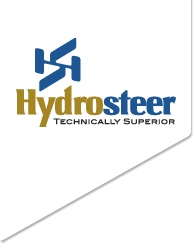Hydraulic System Basics
Hydraulic power steering system’s rely on the hydraulic principles of flow, pressure and work. These principles can be confusing but having an understanding of the principles will help diagnose power steering system faults and therefore solve the problem quickly and cheaply.
Power steering systems need pressure and flow, or more accurately adequate flow at the required pressure to complete the work required of the system, in this case turning the steer wheels.
Pressure
Pressure in a hydraulic system is most easily understood as the ability to resist a force or load. Think about a weight sitting on a closed and sealed hydraulic cylinder, the pressure created in the cylinder is proportional to the piston diameter and the weight. If you halve the weight the pressure is halved refer fig 1. Without flow the mass will not be able to be moved.
Flow
The flow in a hydraulic system determines how fast we can move something. Once again think of two identical cylinders which are connected to high
flow and low flow pumps respectively, refer fig 2. Everything else being equal and assuming the pump generates enough pressure to move the weight in question the pump with twice the flow will move a mass twice as quickly or in half the time. Therefore the pump flow rate will control the speed of operation of the power steering system.
Work
Without flow and pressure in a hydraulic system no “work” can be done. In a power steering system work can be thought of as turning the steer wheels against the friction and self centering action, at the required speed. If we have pressure but no flow we can hold the steer wheels in place against the systems tendency to self center (assuming we are moving) and if we have flow but no pressure we will not be able to provide enough force to resist the self centering action.
Keep an eye out for part two of this article where we deed dive into the detail of how this works on a vehicle.



No comments yet.